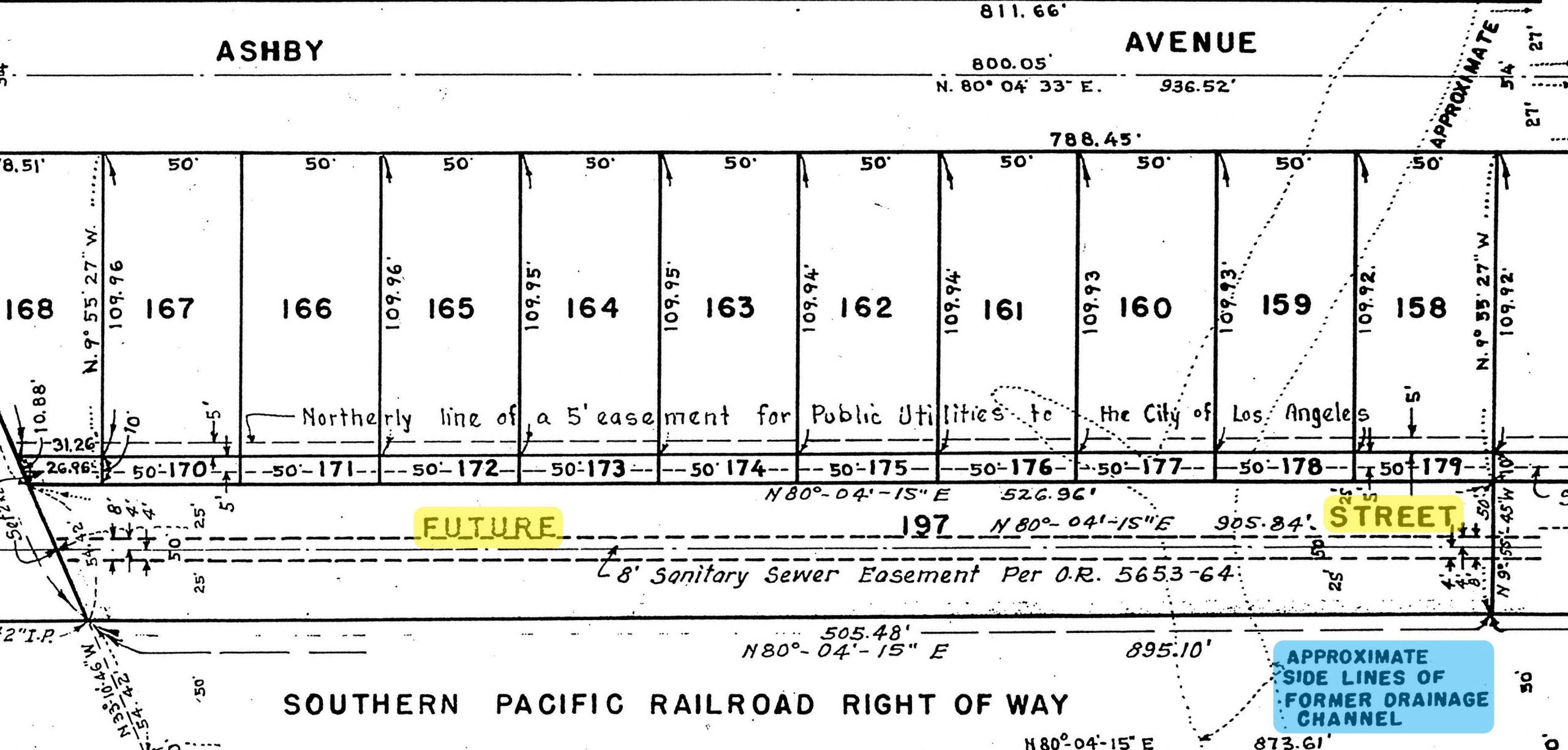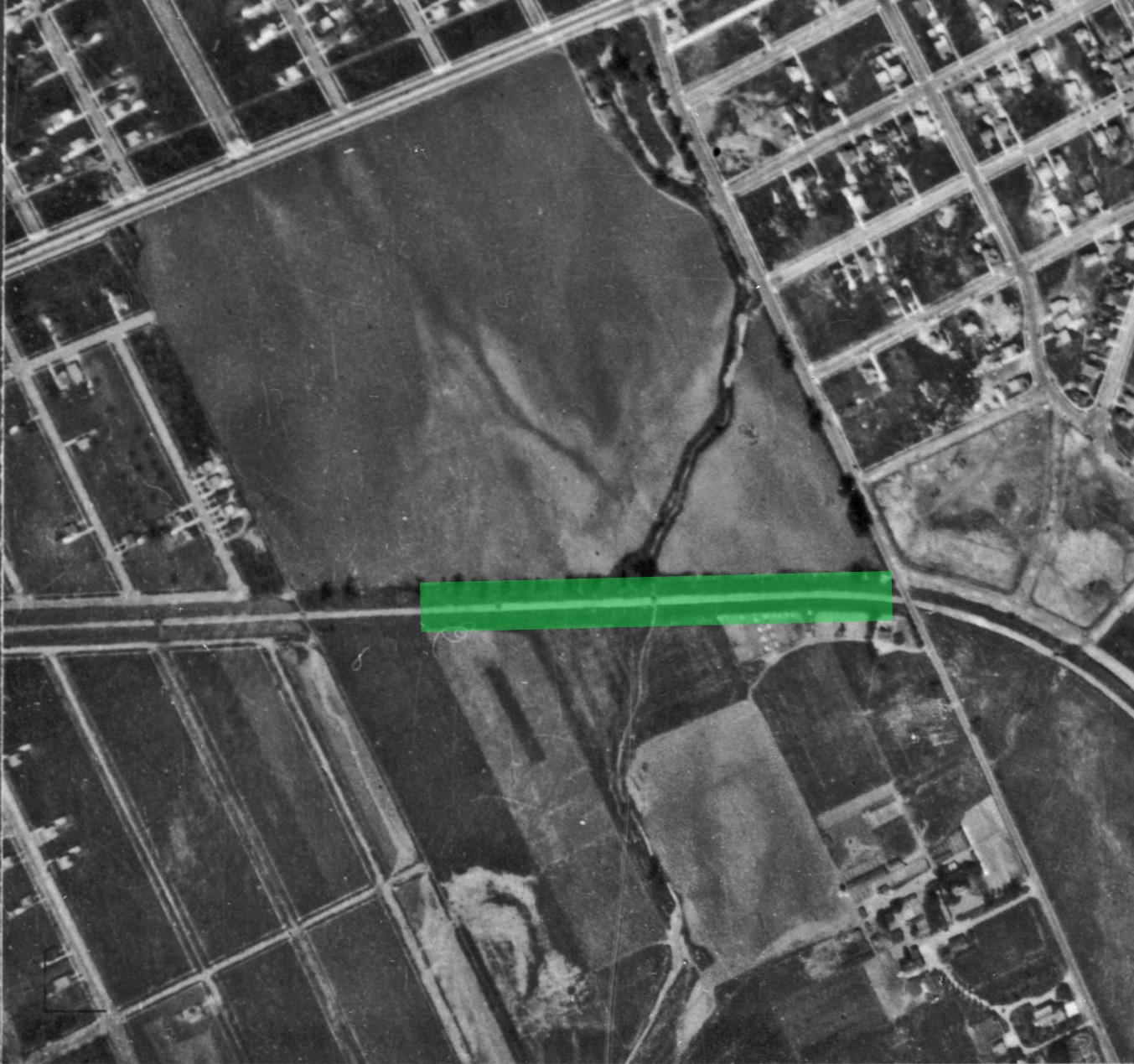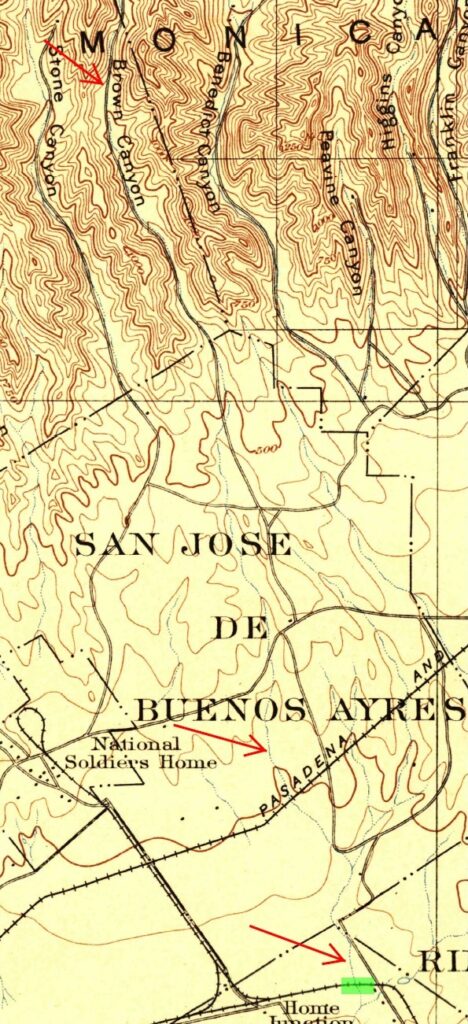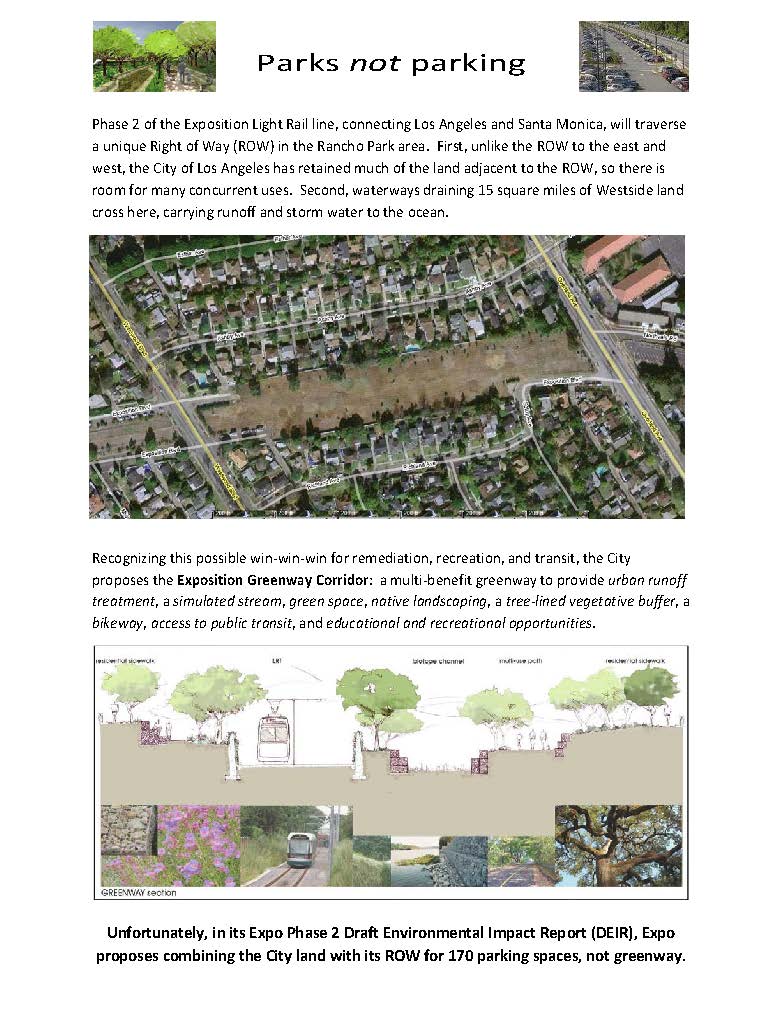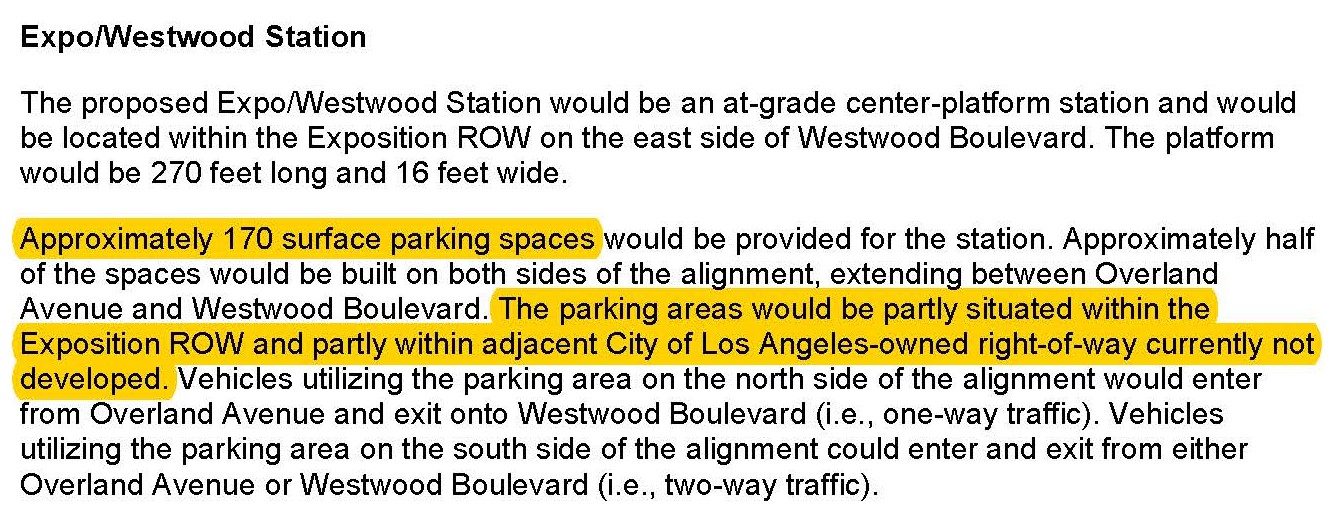How the Greenway came about
Silver baron and Nevada Senator John P. Jones built the Los Angeles and Independence Railroad in 1875, connecting the city of Los Angeles with the city of Santa Monica, which he founded the same year. Southern Pacific later owned the railroad, which it operated as Pacific Electric Railway‘s Santa Monica Air Line as part of the “Red Car” network.
In 1944, when developers laid out the Westwood Gardens subdivision, they gave the City of Los Angeles 50-foot wide parcels north and south of the railroad’s 100-foot wide right of way for sewers and future streets.
Passenger service on the Air Line ended in 1953, while freight trains ran until the late-1980s. After that, the entire 200-foot wide strip of land sat open as shown below.
In 1989, Southern Pacific offered several disused rights of way for sale, leading some community members to form the “Committee to Preserve the Right-of-Way” to urge the Los Angeles County Transportation Commission (a predecessor of Metro) to buy the Air Line right of way. Within a year, the Commission did just that, buying the Air Line land for what would become Metro’s E Line light rail line.
Through the 1990s and into the early-2000s, the local community was divided over what should be done with the railroad’s land. Some favored light rail trains. Others wanted it to be left open or used for more homes, predicting that trains crossing Overland Avenue at street level would jam car traffic and endanger children. To allay those concerns, train supporters suggested grade separation, with the train crossing over or under Overland Avenue. However, the underpass idea was complicated by a large storm drain under Overland Avenue (in red, below). Little if any attention was paid by either side to Westwood Gardens’ adjacent paper streets.

In January 2007, with the rail project under environmental review, Jonathan Weiss (a Cheviot Hills Homeowners’ Association officer and director who was a Palms resident when he joined the Committee to Preserve the ROW in 1989) thought of pumping the Overland storm drain’s continuous, daily flow to the surface for an artificial stream next to the train. In March, he proposed “four uses,” pointing out that “daylighting” the stream would restore habitat, provide educational opportunities, and help the city meet Clean Water Act benchmarks for Ballona Creek, since, even on dry days, the Overland storm drain carried water from the Brown Canyon Storm Drain to the creek – water which was polluted by urban runoff. Many train supporters, including Sarah Hays, who had by then formed Light Rail for Cheviot, actively supported the idea from the start.
Also in early-2007, Westwood Gardens neighbors, led by David Wendell, gathered signatures on a petition against a parking lot by the proposed light rail station. After David and Jonathan met, and discovered they were both working to save the land, area residents (whether favoring the train or not) worked together for a Greenway. Throughout 2007, the Greenway concept picked up support:
“This is a great proposal” (Jessica Hall, Santa Monica Bay Restoration Commission, Ballona Creek Watershed Coordinator, 3/26/07 email)
“Local proposals, alternative solutions, and those which integrate multi-purposed uses and mitigations, such as Light Rail for Cheviot’s Transitway/Parkway/ Waterway concept must be encouraged and closely studied.” (Congressmember Diane E. Watson, 4/2/07 letter to Exposition Metro Line Construction Authority)
“Ballona Creek Renaissance board has endorsed your conceptual proposal ‘as consistent with our goals and objectives and worthy of further study.’” (Jim Lamm, Ballona Creek Renaissance 4/26/07 email)
“The Sierra Club recommends full study of this ‘Green Corridor’ transitway + waterway + parkway option in the current Expo Line phase 2 Draft EIS/EIR.” (Angeles Chapter Executive Committee Resolution, approved 5/20/07)
“I am writing in strong support of your proposal” (California State Senator Sheila Kuehl; 5/21/07 letter)
“[M]otion to write a letter to [City Councilmember] Jack Weiss to support study of the Expo Green Corridor. Approved 16 – 0.” (Westside Neighborhood Council, 6/15/07 Minutes)
“I received your proposal for a green corridor along Exposition right-of-way. I had previously discussed this concept with Jessica Hall and she and I are both very supportive of the idea.” (Shelley Luce, D. Env., Executive Director, Santa Monica Bay Restoration Commission, 6/18/07 email)
“Heal the Bay would be more than happy to work with stakeholders and MTA in exploring these concepts further.” (Kirsten James, Staff Scientist, Heal the Bay, 6/29/07 letter)
“TreePeople encourages the allocation of funding to study the Exposition Green Corridor Project proposal.” (Rebecca Drayse, Director, Natural Urban Systems Group, TreePeople, 9/25/07 email)
“We feel that this project would offer an opportunity to create California native plant coastal sage scrub and wetland habitats which would in turn provide food and shelter for wildlife in an urban setting.” (Snowdy Dodson, Chapter President, California Native Plant Society, Los Angeles/Santa Monica Mountains Chapter, 10/26/07 letter)
These statements of support were included in the first website dedicated to the “Expo Greenway” concept.
Nevertheless, the January 2009 design for the light rail line precluded parkways and stream. Instead, planners proposed parking lots.
Joined by Los Angeles City Councilmember Paul Koretz’ deputies (e.g., Jay Greenstein, David Girón, and Chuy Orozco), Department of Sanitation staff (e.g., Ryan Thiha), scientists (e.g., Dr. Christy Morris), and environmentalists (e.g., NRDC’s Damon Nagami), Greenway advocates met with concerned homeowners at every opportunity.
Fortunately, as advocates continued to build consensus, on March 18, 2011, the Exposition Metro Line Construction Authority chose the “no parking” option, freeing the land for the Greenway. And, in April 2012, the City of Los Angeles issued a Concept Report for the Westwood Neighborhood Greenway Proposition O Project.

On July 8, 2013, Sarah Hays, Annette Mercer, and Jonathan Weiss (who met as train advocates) formally convened as the “Westwood Greenway Steering Committee.” They were soon joined by Westwood Gardens Civic Association President Marilyn Tusher, realtor Sean McMillan, and park-not-parking organizer David Wendell. (Several are pictured above.) They would meet regularly, add more members (including Los Angeles Audubon’s education director Cindy Hardin and sustainability expert and Greenway neighbor Elektra Grant) and present the idea wherever they could: to the public, to politicians, and on their website.
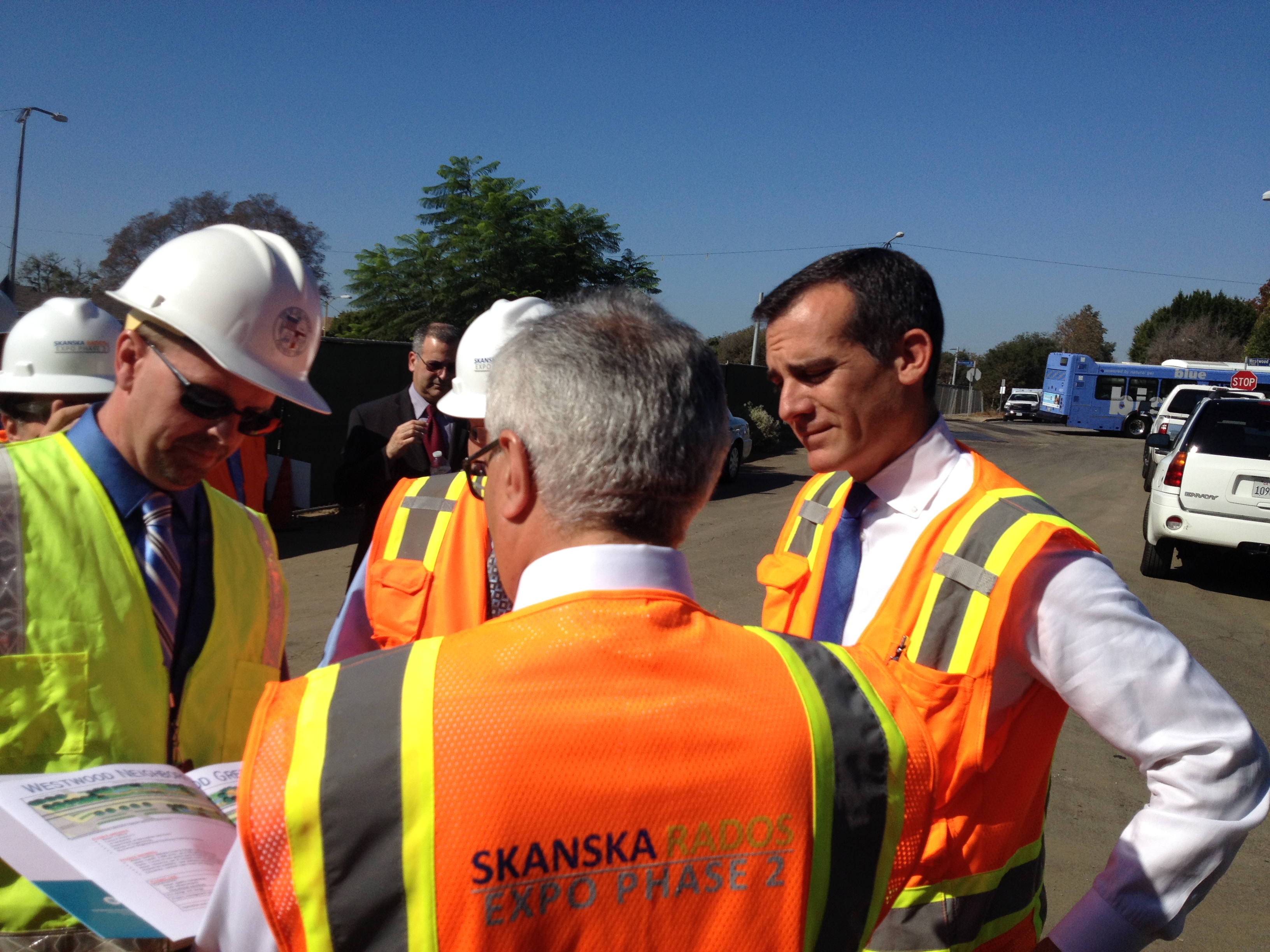
In early-2015, film student Angel Garcia recorded and produced videos of Steering Committee members promoting the Greenway concept. It included animation and an outdoor learning center drawn by committee member Jonnathan Padilla. In June, the Committee members shared the video along with other information with community members at “Pick Pico.”


On October 20, 2016, the Santa Monica Bay Restoration Commission, after hearing from Los Angeles City Councilmember Paul Koretz and Steering Committee members, recommended that the California State Water Board provide $2.2 million in Proposition 84 funds for the Greenway.
Soon after, on November 4, 2016, the Committee celebrated with the Councilmember, Department of Sanitation management and staff, neighbors, and advocates as signs were erected “dedicating” the City land for the future Westwood Greenway.
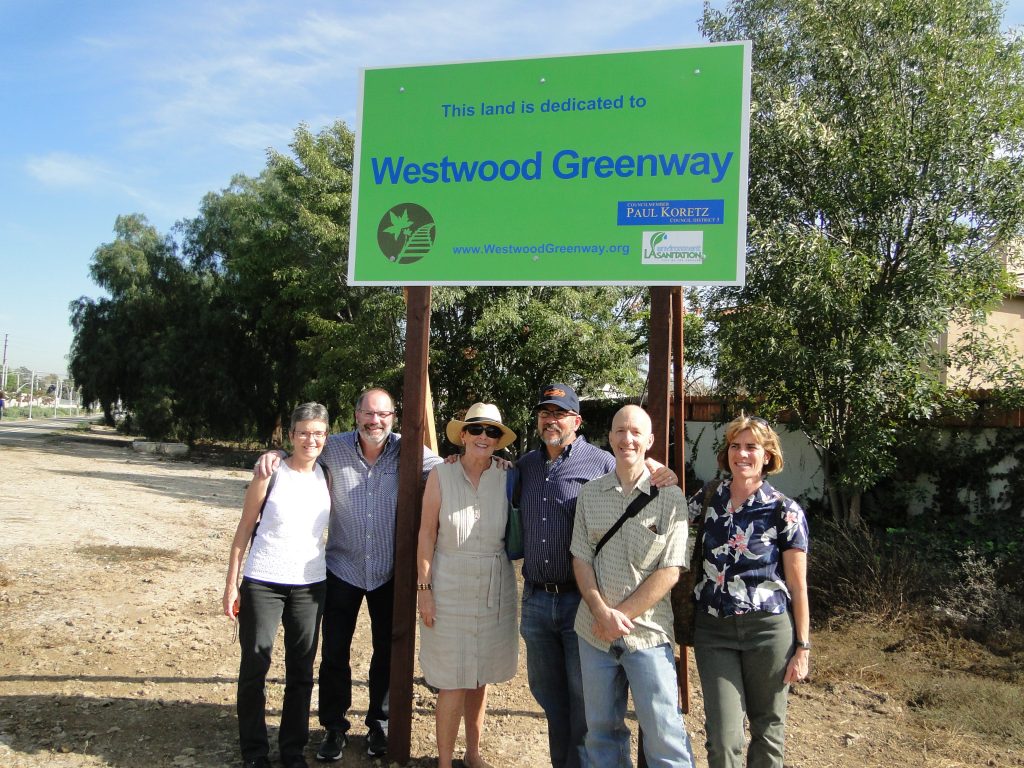
The Westwood Greenway was budgeted at $5,460,000: $3.26 million from the City’s Proposition O bonds and $2.2 million from the State Water Control Board’s Proposition 84 funds. Proposition O monies were available because the original Proposition O projects came in under budget. On September 18, 2017, the Proposition O Citizens Oversight Committee voted to fully fund the Greenway, and on September 28, 2017, the Administrative Oversight Committee followed suit.
On October 31, 2017, the Los Angeles City Council approved full funding, and Mayor Garcetti signed off on November 9th. The City and State finalized their agreement in April 2018.
Construction began on September 24, 2019, when a subcontractor (Superior Tree Care) started removing non-native trees and other vegetation. It was substantially completed in October 2020.

